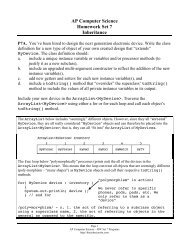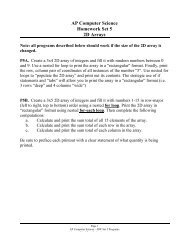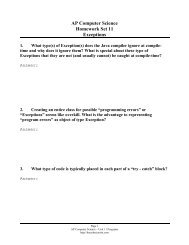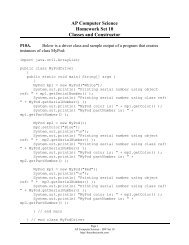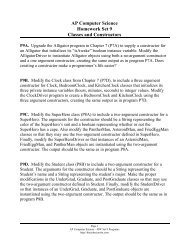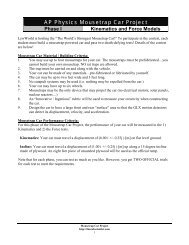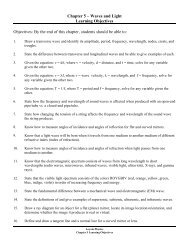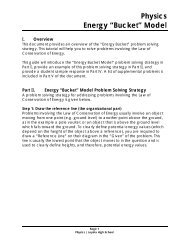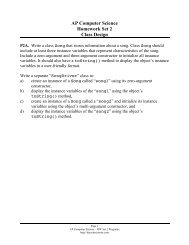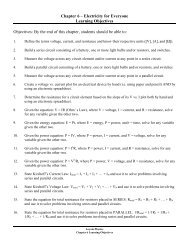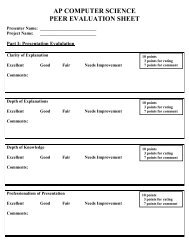Physics Momentum “Bucket” Model - thecubscientist.com
Physics Momentum “Bucket” Model - thecubscientist.com
Physics Momentum “Bucket” Model - thecubscientist.com
Create successful ePaper yourself
Turn your PDF publications into a flip-book with our unique Google optimized e-Paper software.
Step 3: Draw <strong>Momentum</strong> Buckets<br />
The concept of Conservation of <strong>Momentum</strong> requires the student to analyze the<br />
INSTANT BEFORE the collision and the INSTANT AFTER the collision. Here students<br />
fill each “momentum bucket” depending on whether or not each object is<br />
moving (i.e. possesses momentum). There are three possible cases. Each is<br />
described below:<br />
Case I: One or both objects are traveling in the positive direction BEFORE the<br />
collision; one or both objects is traveling in the positive direction AFTER the<br />
collision. In the case shown below, both m1 and m2 are traveling to the right<br />
before the collision, only m2 is moving after the collision.<br />
Before collision<br />
After collision<br />
v1i v2i v2f<br />
m1 m2 m1<br />
m2<br />
+<br />
= +<br />
pm1<br />
in<br />
pm2<br />
pm2<br />
The “i” and “f” subscripts represent the “initial” and “final”, representing the<br />
instant before and after the collision, respectively.<br />
m1 = the mass of object 1 [kg]<br />
v1i = the velocity of object 1 at the instant BEFORE the collision [m/s]<br />
v1f = the velocity of object 1 at the instant AFTER the collision [m/s]<br />
m2 = the mass of object 2 [kg]<br />
v2i = the velocity of object 2 at the instant BEFORE the collision [m/s]<br />
v2f = the velocity of object 2 at the instant AFTER the collision [m/s]<br />
p = the momentum of the object [kg m/s]<br />
Page 2<br />
<strong>Physics</strong> | Loyola High School




